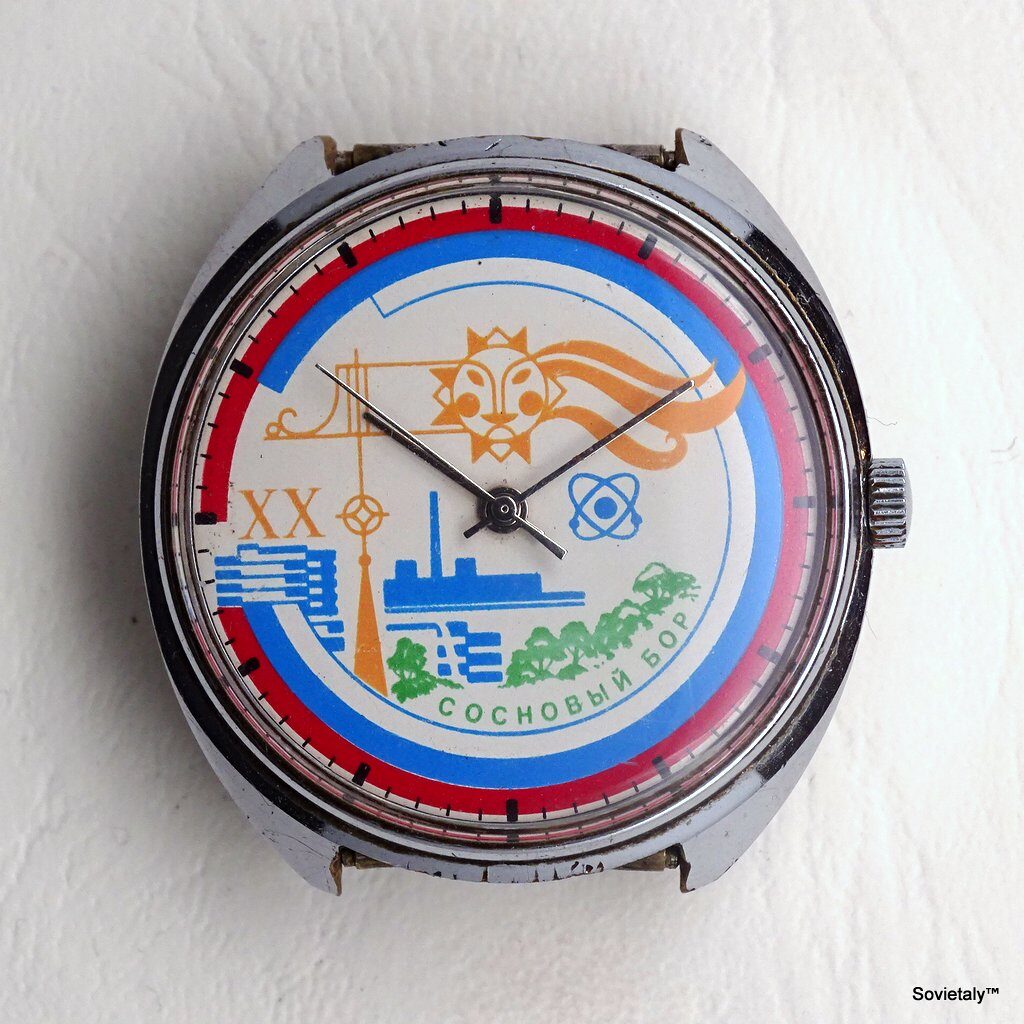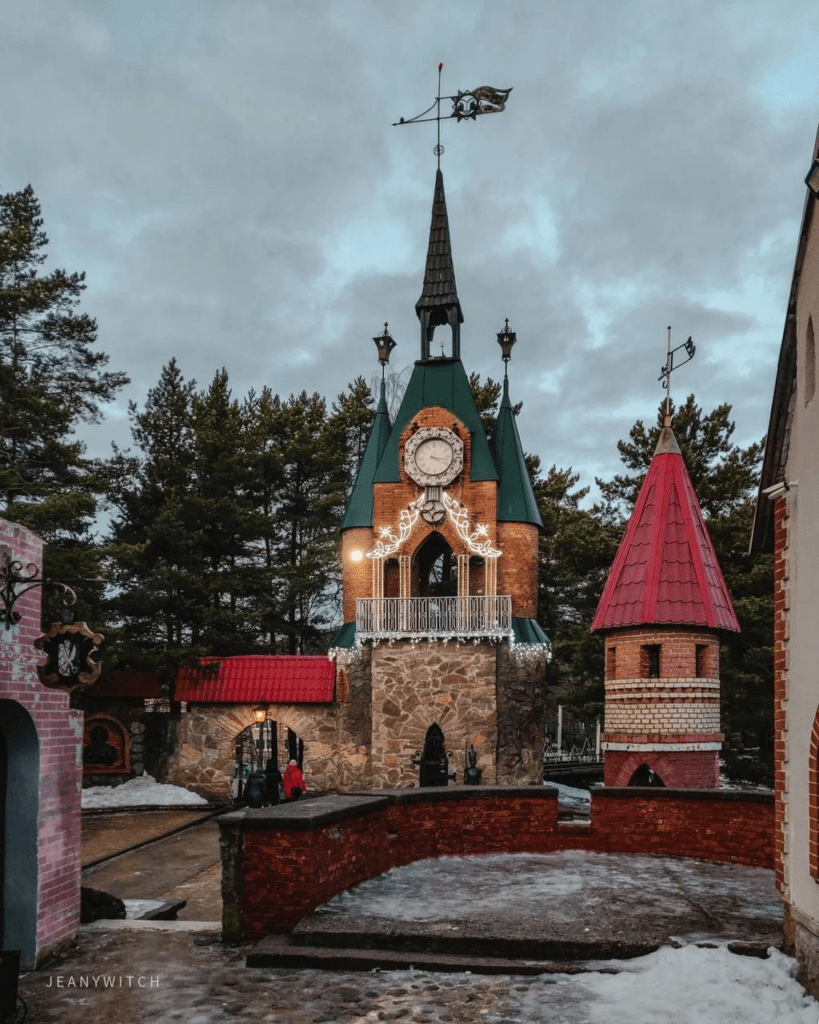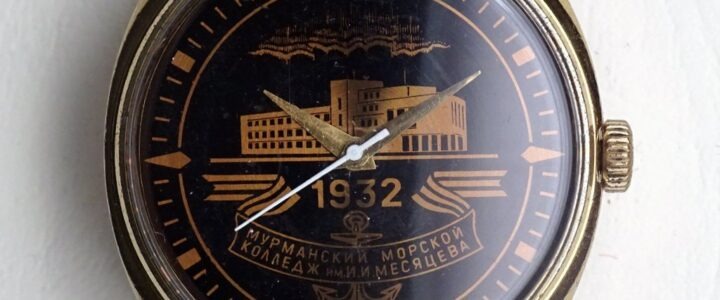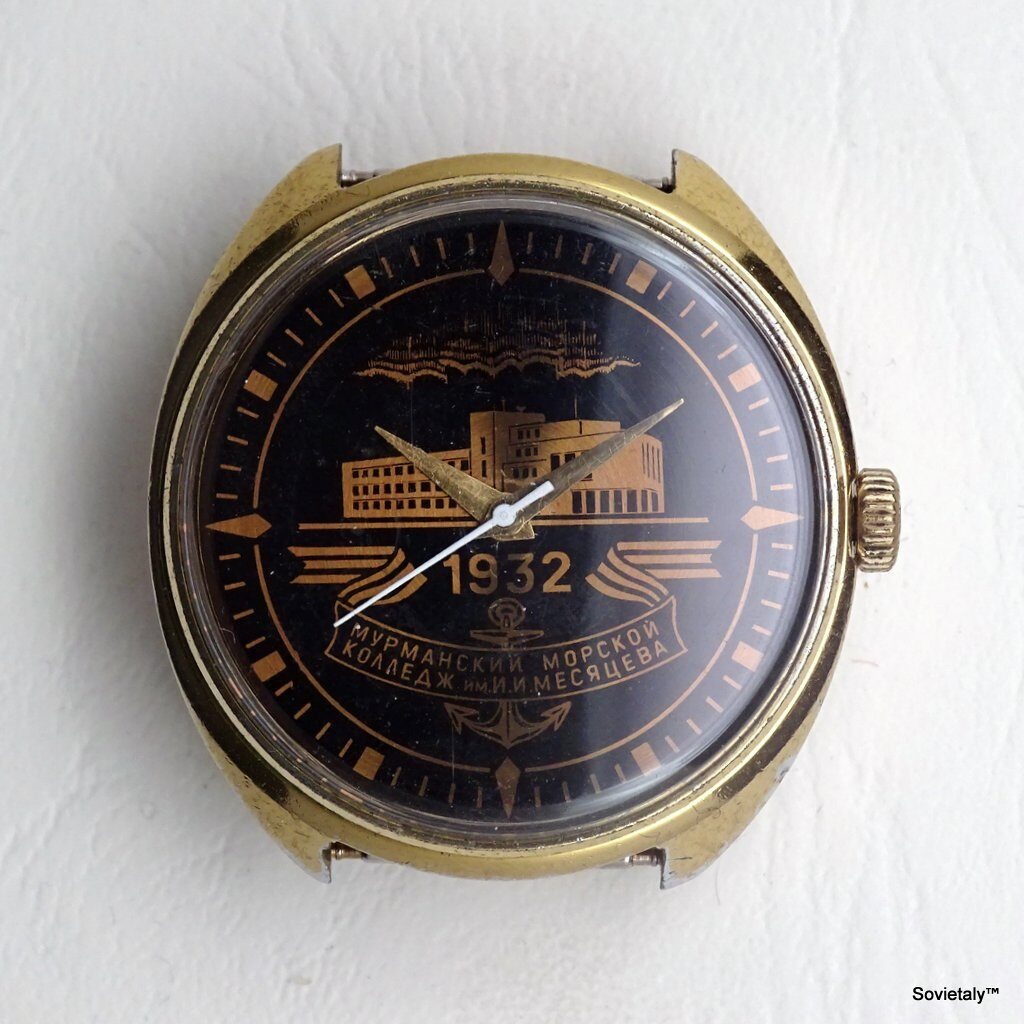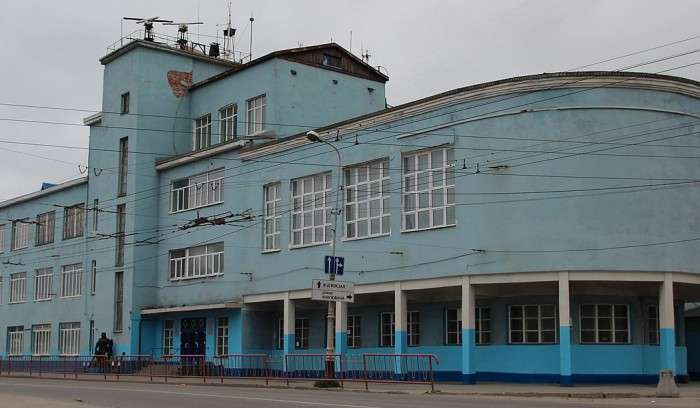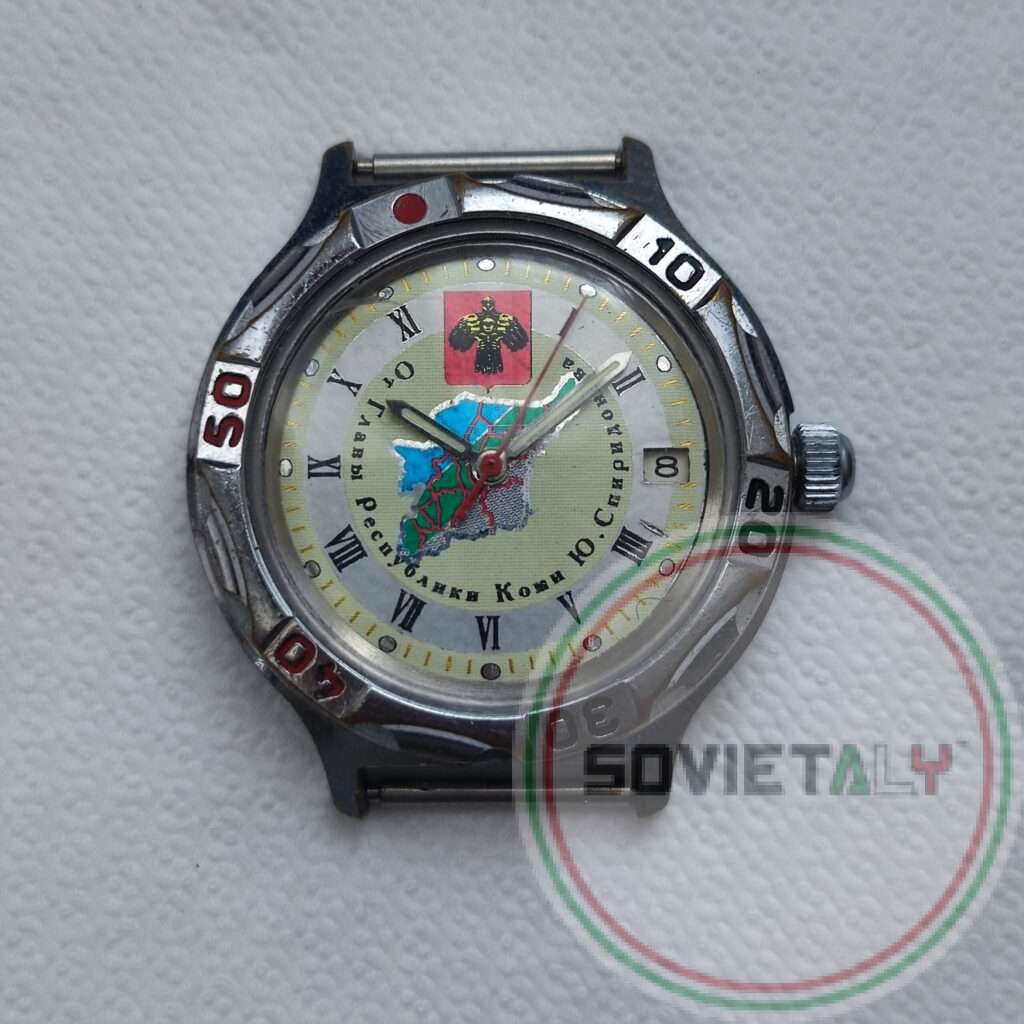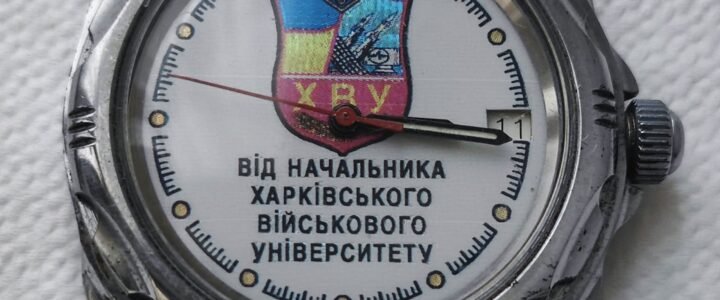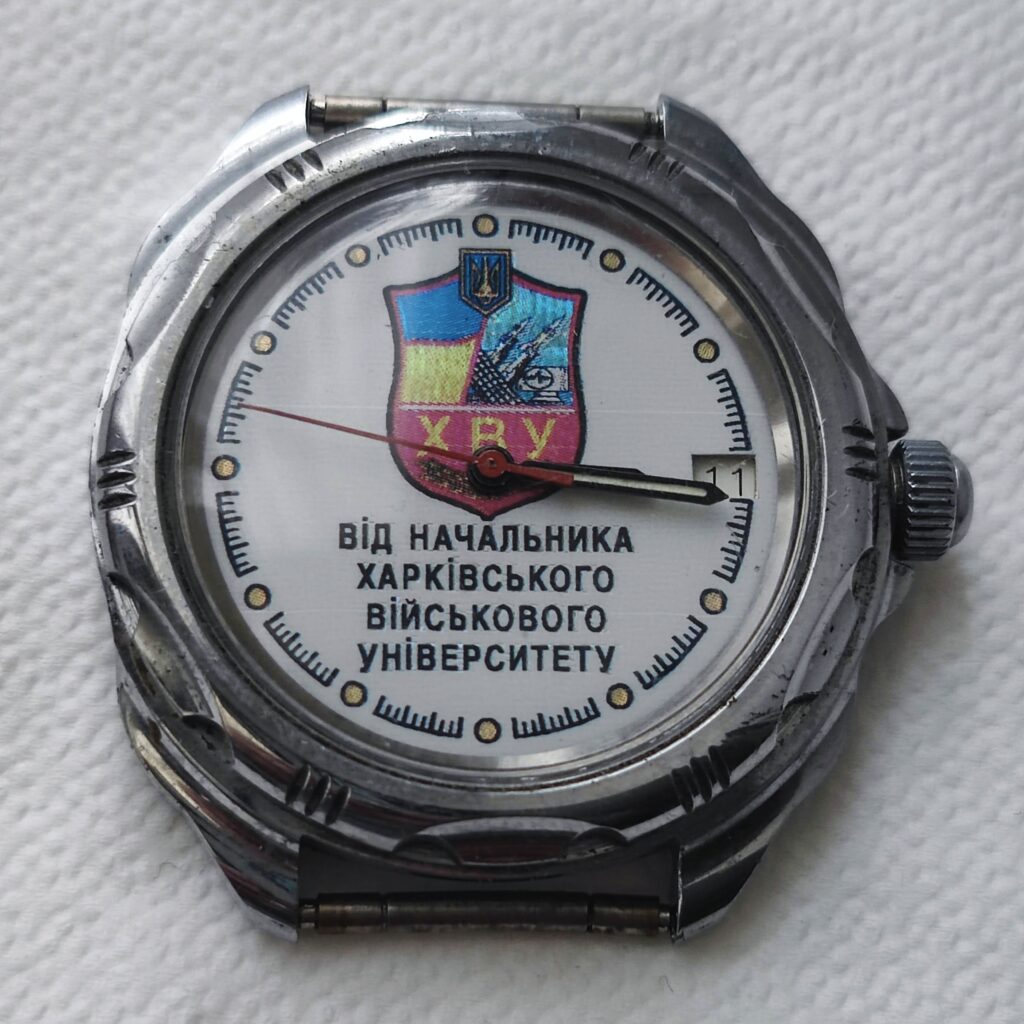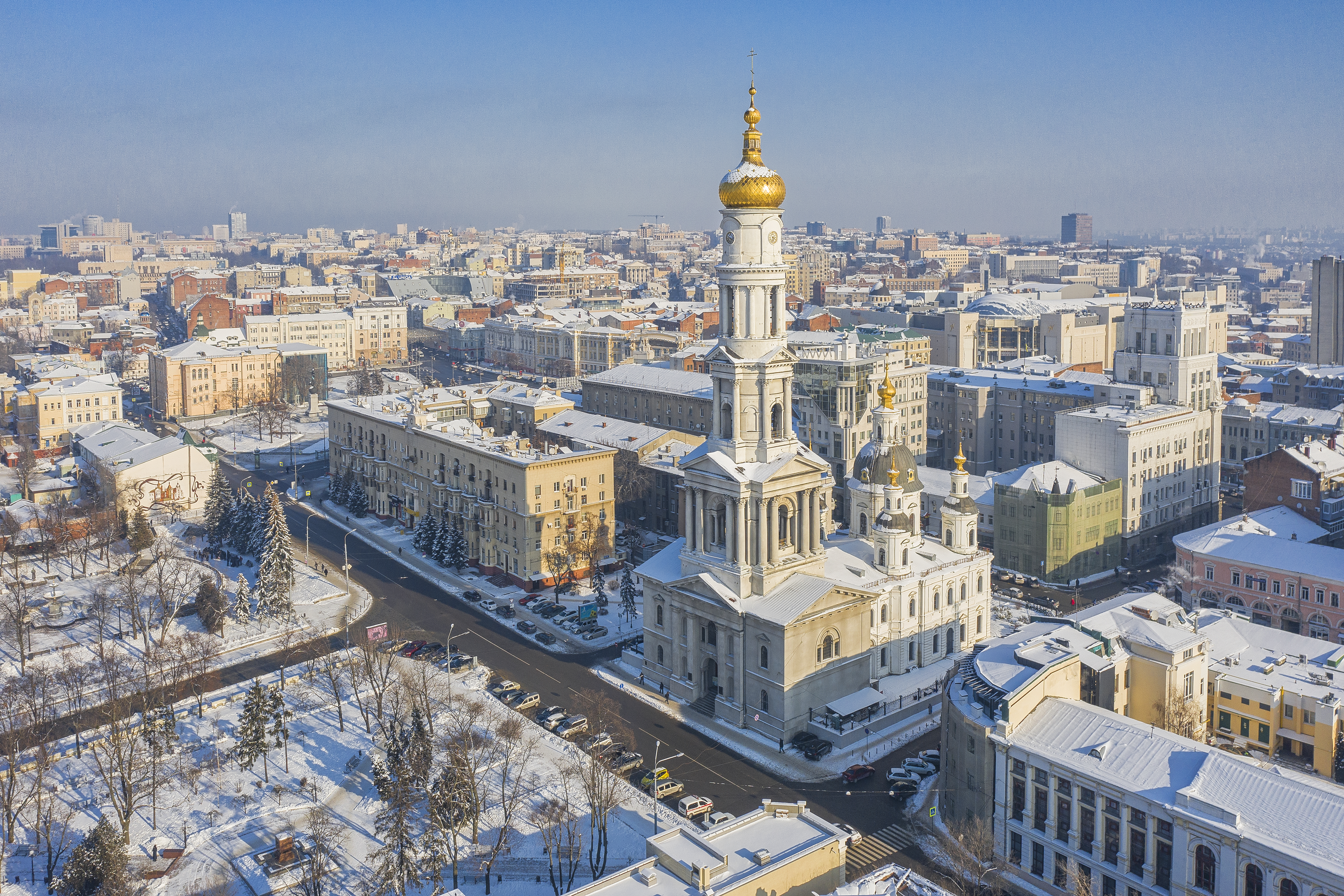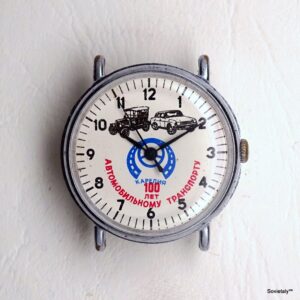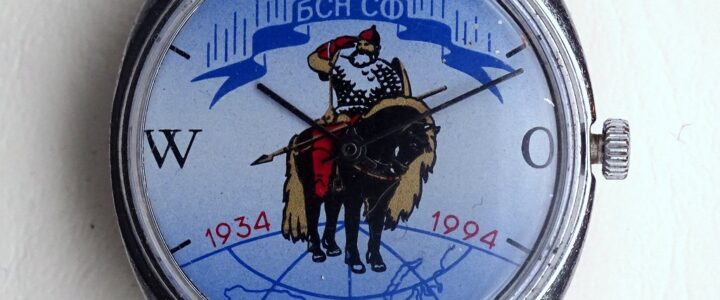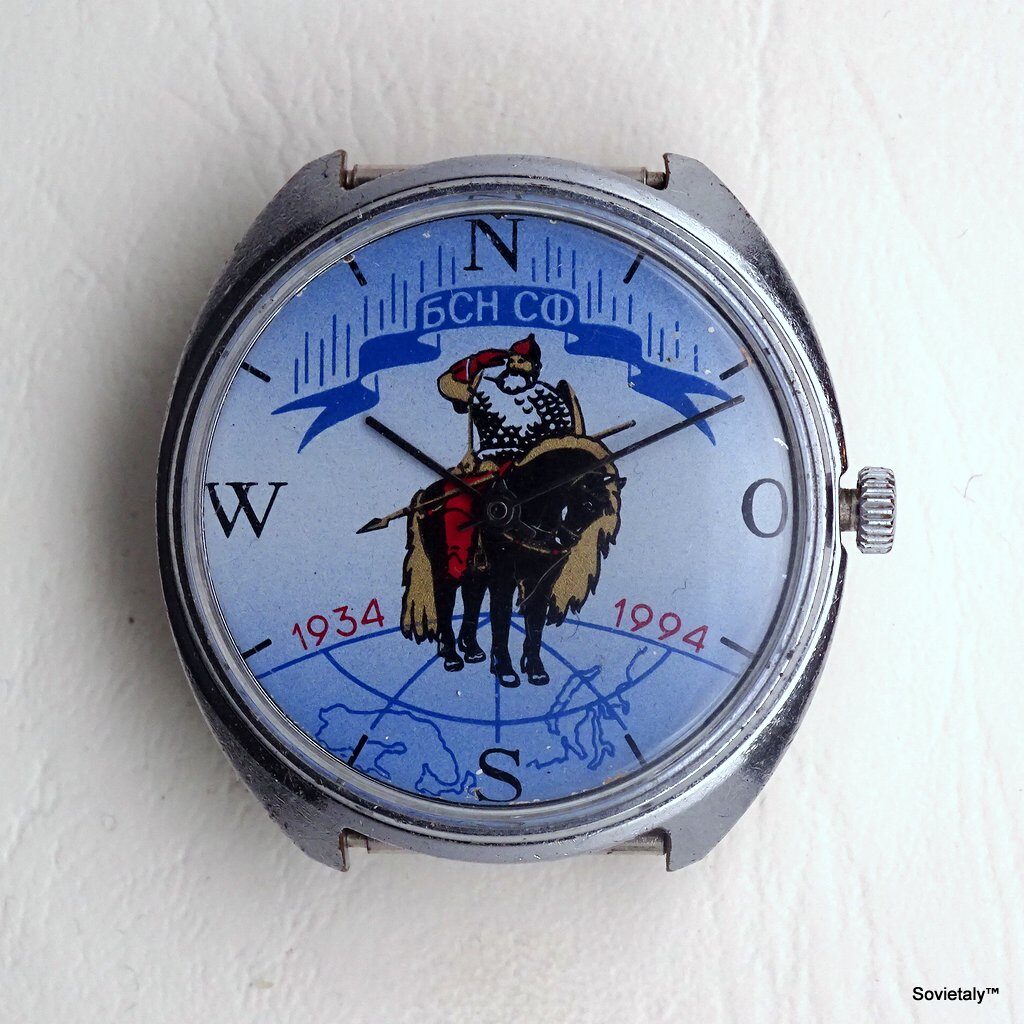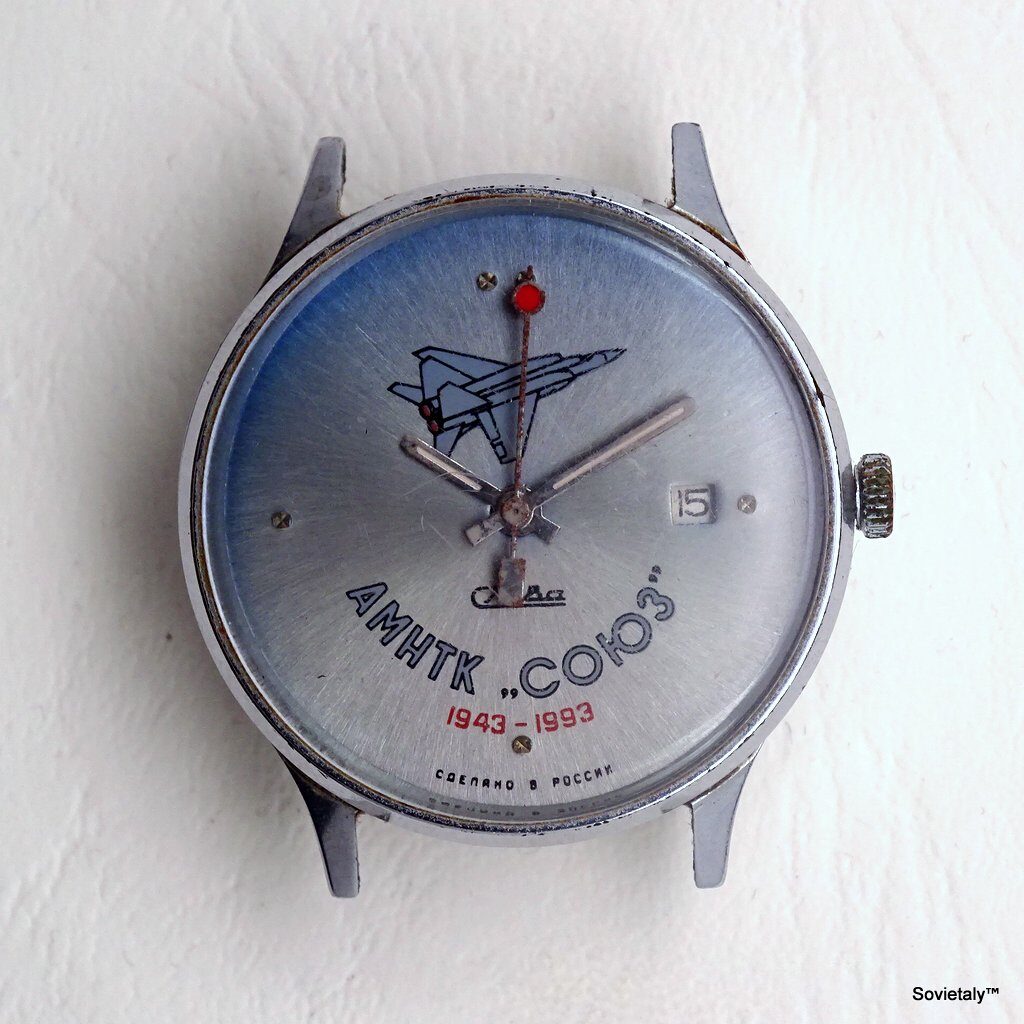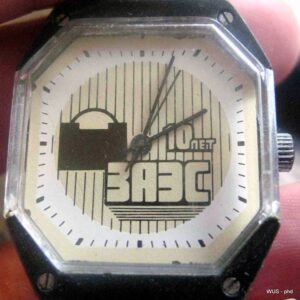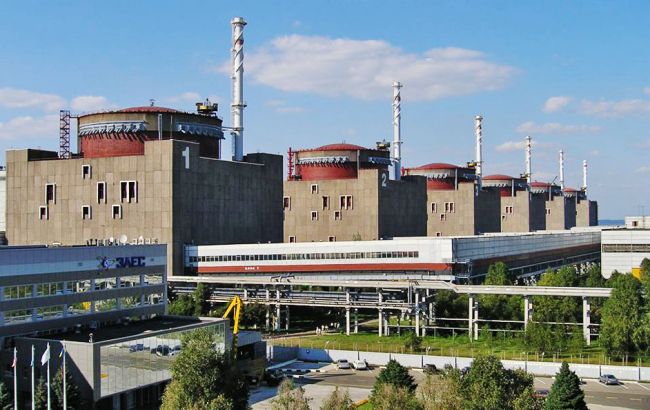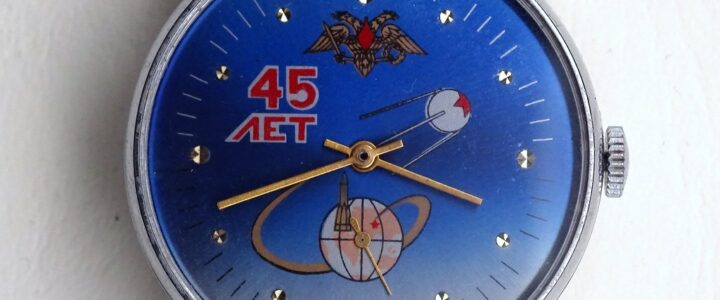Description and Features of the Raketa Aspol Watch
The Raketa Aspol watch is a rare and fascinating piece, created to celebrate polar explorations and honour the explorers associated with the Association of Polar Explorers (ASPOL). This watch stands out not only for its design but also for its historical and collectible value.
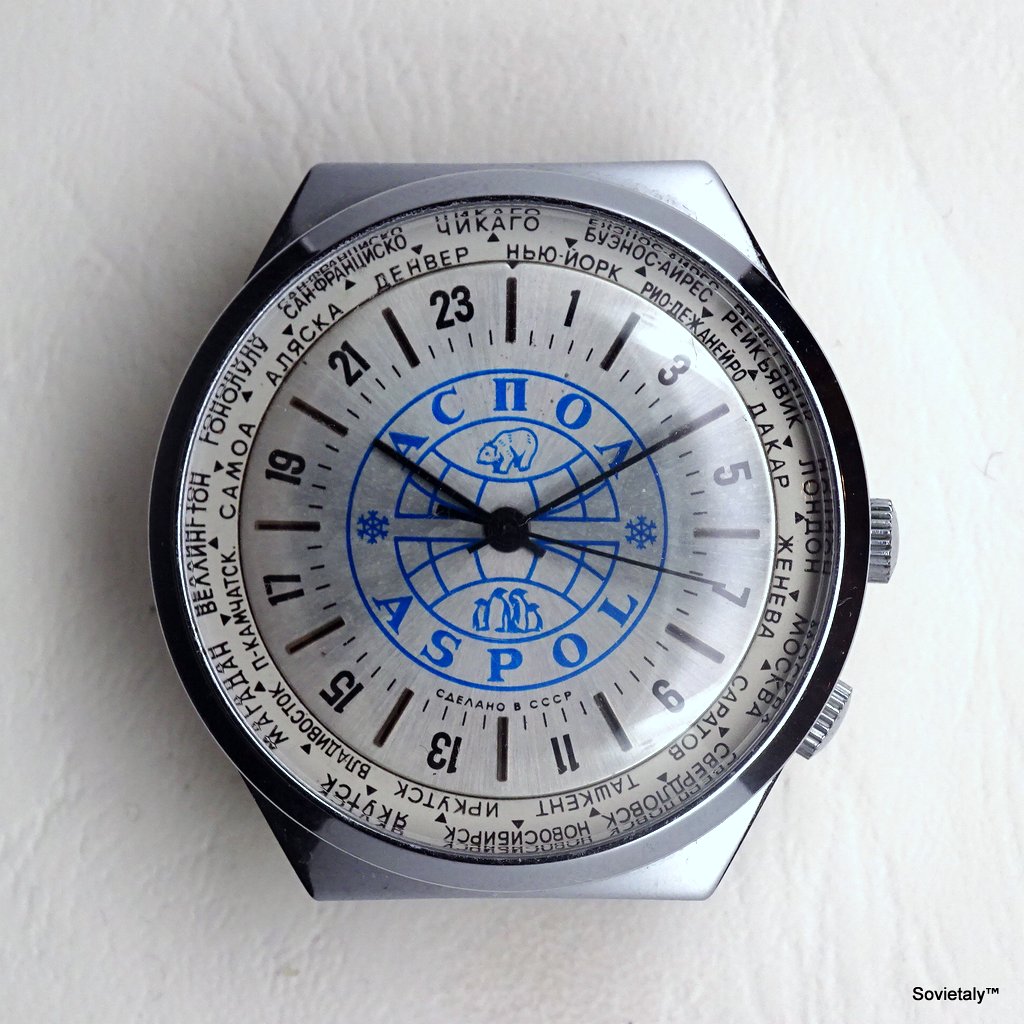
Technical Specifications
- Movement: Calibre 2623H manual wind, known for its robustness and accuracy, with a 24-hour format.
- Case: Made of chrome-plated brass, giving the watch a shiny and durable appearance.
- Crystal: Plexiglass, lightweight and impact-resistant.
- Dial: Available in two colour variants – blue and red. The red version is particularly rare and sought after by collectors.
The Commemorative Raketa Aspol Dial
The dial of the Raketa Aspol watch is rich with symbols and inscriptions celebrating polar heritage:
- Central Globe: Represents the significance of polar explorations, with a polar bear at the centre, symbolising ASPOL.
- Aspol Inscriptions: The association’s name is present in both Cyrillic (АСПОЛ) and Latin (ASPOL), emphasising the connection to polar explorations.
- City Names: Lists various cities around the world, facilitating time reading across different time zones.
The Association of Polar Explorers (ASPOL)
Founded in 1990 during the All-Union Congress of Polar Explorers, the ASPOL aims to protect the interests of polar workers and indigenous peoples of the Far North. The association plays a crucial role in implementing Russia’s state policy in the Arctic and Antarctic.

ASPOL’s Mission and Activities
ASPOL is involved in various areas, including:
- Environmental Sustainability: Promotes projects and policies for the environmental protection of polar regions.
- Education and Culture: Organises events such as the International Forum “Arctic: Today and the Future” and celebrates “Polar Explorer Day” on May 21st, commemorating the first scientific expedition to the “North Pole-1” station.
- International Collaboration: Facilitates cooperation between governmental entities, scientific institutions, and non-profit organisations for the sustainable development of polar regions.
Historical Facts and Soviet Legacy Related to the Raketa Aspol Watch
During the Soviet era, polar explorations were a scientific and strategic priority. Polar expeditions, like the “North Pole-1” station in 1937, collected crucial scientific data and contributed to the understanding of atmospheric processes in the Arctic.
Artur Chilingarov and ASPOL
Artur Chilingarov, president of ASPOL and special representative of the President of the Russian Federation for international cooperation in the Arctic and Antarctic, is a key figure in promoting polar explorations. Under his leadership, ASPOL continues to support scientific research and environmental protection in polar regions.
Conclusion
The Raketa Aspol watch is not just a piece of Soviet horological history but also a tribute to polar explorations and the men and women who dedicated their lives to these missions. Its rarity, especially the red dial variant, makes it a highly valuable item for collectors and history enthusiasts.
For more information about ASPOL and its activities, visit the official website: ASPOL.
- Raketa Big Zero: The Story Behind One of the Most Iconic Watches

- CCCP Sputnik 1 – A Watch That Celebrates the Space Age

- How to Remove Scratches from the Plexiglass of Your Watch: Complete Guide

- Complete Guide to Modern Russian Watchmaking

- Soviet CCCP Watch: The History of SOVIET Watches from the ’90s

- Russian Military Watches: A Comprehensive Guide




